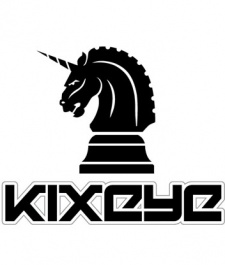In one of the most intriguing talks at GDC 2013 in San Francisco, Will Harbin, CEO of core social developer Kixeye spoke on the subject of How To Kill Downloads.
He spoke about how the industry was changing, and fast; even for Kixeye, which is now a 450-strong developer on web, Facebook and increasingly mobile.
"We're essentially making the traditional publishing model obsolete," he pointed out.
"I scratch my head when developers come to me with good-looking, almost complete games and ask for help in publishing. Just open a Facebook ad account and spend some money and experiment."
90% of the market to win
In terms of Kixeye's business model, it only makes multiplayer core games, because it's the best way to approach the free-to-play games-as-a service environment.
Indeed, Harbin said he thought there was plenty of opportunity remaining.
"There's very little saturation, maybe only 10 percent market saturation in terms of new gaming experiences."
However, he thinks that developers need to think carefully on what they focus on; basically less fidelity, more accessibility - that's the 'killing the downloads' bit.
For example, Kixeye's game War Commander was released after four months development work, but the launch failed.
So Kixeye spent a lot of time making changes, including adding a true social layer, deep chat, heavily customisable units, and - importantly - a synchronous combat PVP mode, alongside the existing asychronous mode.
"Adding a World Map increased ARPDAU 200 percent overnight, and now 21 percent of all PVP battles are synchronous," Harbin said.
In addition, 50 percent of users now make a purchase on day 1.
Be flexible
However, one issue with making sychronous games is they cost three times more and take five times longer than asychronous.
In terms of the development cycle, Harbin argued developers had to maximimse the best, most flexible technology they have access to now.
"Don't always chase the shiniest new solutions. Stop the technology masturbation," he said.
Instead, Harbin said developers had to let their players fall in love with the core gameplay loop, not the graphics.
Pay you long time
The most significant element of Harbin's talk focused on monetisation, however.
He said that Kixeye doesn't focus on monetisation or optimising compulsion loops, or K factors.
"I hate it when I play a game that gates my experience by asking for money or stop playing," Harbin commented.
Instead, the company focuses on retention, using what Harbin called the '12 month tractor beam'.
"25 percent of our revenue comes from users who have been playing our games for over a year," he said.
The talk ended with a sneak peak of 3 of the 8 games Kixeye is releasing in 2013.
These were 3D fantasy hacking RPG TOME: Immortal Arena, space RTS VEGA Conflict, and what looked like a World of Tanks-style 3D tank combat sim Armor (working title).
#GDC 2013: Worry about accessibilty, not shiny tech says Kixeye's Harbin, as he promotes the '12 month tractor beam'
Company will release 8 games in 2013





















